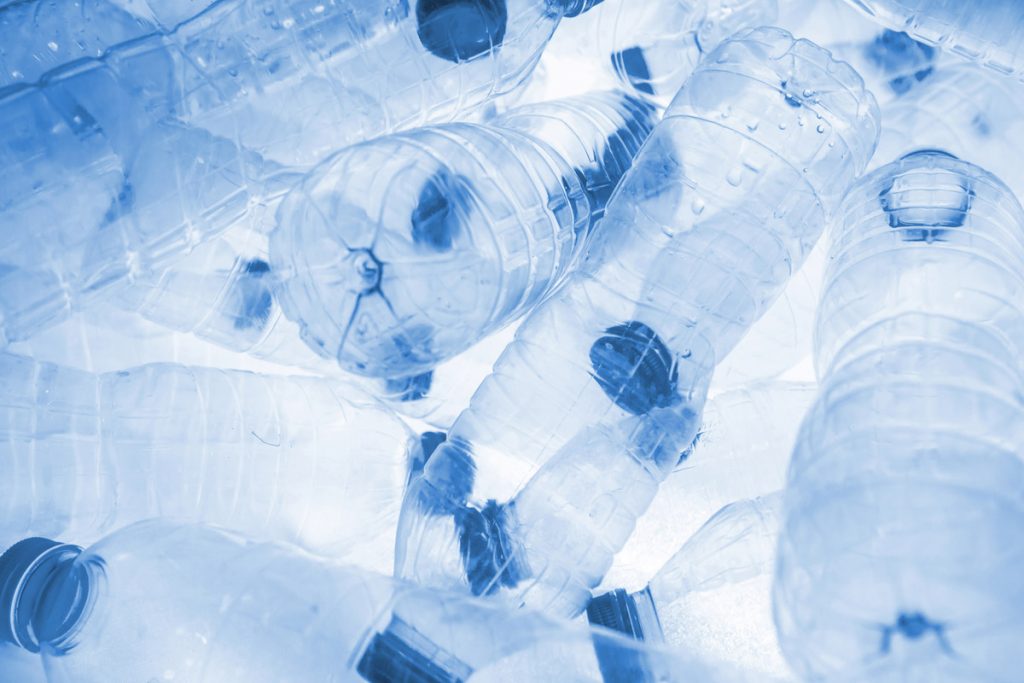
An increased bottle recycling rate was driven mainly by PET bottles. | Nixx Photography/Shutterstock
The U.S. plastic bottle recycling rate was 28.2% in 2021, up 1 percentage point from a year earlier, according to an industry report released April 11.
The increase in the bottle recycling rate was driven by PET bottles, the data shows. The country recycled about 28.7% of PET bottles in 2021, up 1.6 percentage points from 2020. The HDPE bottle recycling rate was 28.9%, which was roughly flat from the year before.
PP and other polymers made up an extremely small percentage of other containers.
The report was released today by the Association of Plastic Recyclers (APR), the Institute of Scrap Recycling Industries (ISRI) and the U.S. Plastics Pact. The Recycling Partnership also contributed funding to the research, which was conducted by Stina Inc. using surveys conducted by Stina and the National Association for PET Container Resources (NAPCOR).
(APR owns Resource Recycling, Inc., publisher of Plastics Recycling Update.)
In addition to recycling rates, the study shows an overall increase in weights of plastic recovered in 2021, reflecting a bounceback from the pandemic dip in 2020.
In 2021, 5.08 billion pounds total were recovered for recycling, up 5.8% from the year before. That weight includes bottles, non-bottle rigid plastics, film and other plastic, but it excludes foam.
“The 2021 rate report shows the strength of the recycling industry, as they face ongoing challenges including competition with low disposal costs, collection rates and virgin resin prices,” Steve Alexander, APR’s president and CEO, stated in a press release.
HDPE volume down
Within the total weight recycled, there was good news and bad news, however.
The weight of PET bottles recycled came in at 1.93 billion pounds, up 9.3% from the year before. But the weight of HDPE bottles recovered was 927 million pounds, down 1.7% from 2020.
The analysis also showed that domestic reclaimers continue to handle the vast majority of post-consumer plastic recovered here. Overall across all categories, 92.3% of recovered plastic was purchased by domestic reclaimers, and 7.7% was exported in 2021. That breakdown is the result of a trend going back several years.
In the release, Alexander said that to achieve larger recycling increases, public policy is needed to drive systemic change and improve collection and sortation and stabilize demand for recycled resins.
“APR is supportive of extended producer responsibility (EPR) laws and recycled post-consumer content requirements recently enacted in several states,” he stated. “APR also supports a national bottle bill and other federal legislation that can drive change through a combination of supply and demand policies, targeted funding and incentives, as well as streamlined collection programs.”
In the release, ISRI’s president, Robin Wiener, said the recycling industry is doing more than ever to reduce waste.
“Our goal is to make the supply chain ever more sustainable by providing manufacturers with high-quality material and reducing the need to extract natural resources to make new products we rely on every day,” she stated.
The U.S. Plastic Pact is an organization that unites businesses, nonprofits, government agencies and research institutions as it works to carry out goals outlined by the Ellen MacArthur Foundation’s New Plastics Economy Initiative. Members include a number of major consumer product brand owners.
“The U.S. Plastics Pact is working to raise the quality and quantity of post-consumer recycled plastics, particularly for PET and HDPE packaging, which make up the largest tonnages of packaging represented by our members,” Emily Tipaldo, U.S. Plastics Pact executive director, stated in the press release. “If we expect to achieve true recyclability, we need high demand for recycled plastics. Achieving true recyclability, as well as using higher percentages of PCR requires significantly greater tonnages of recycled plastics.”
More stories about research
- New report explores the future of CPG packaging goals
- RIT researchers develop AI-based textile recycling system
- Researchers: Effective plastic treaty requires production cuts